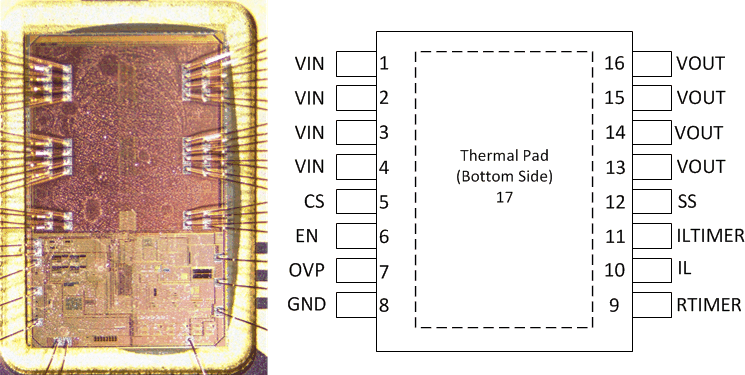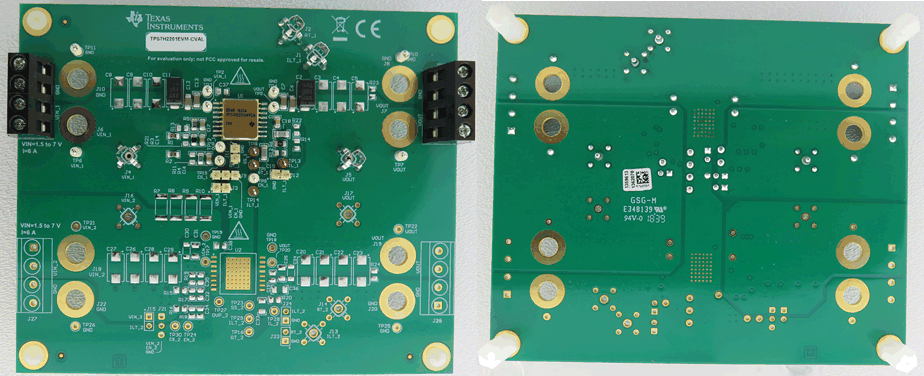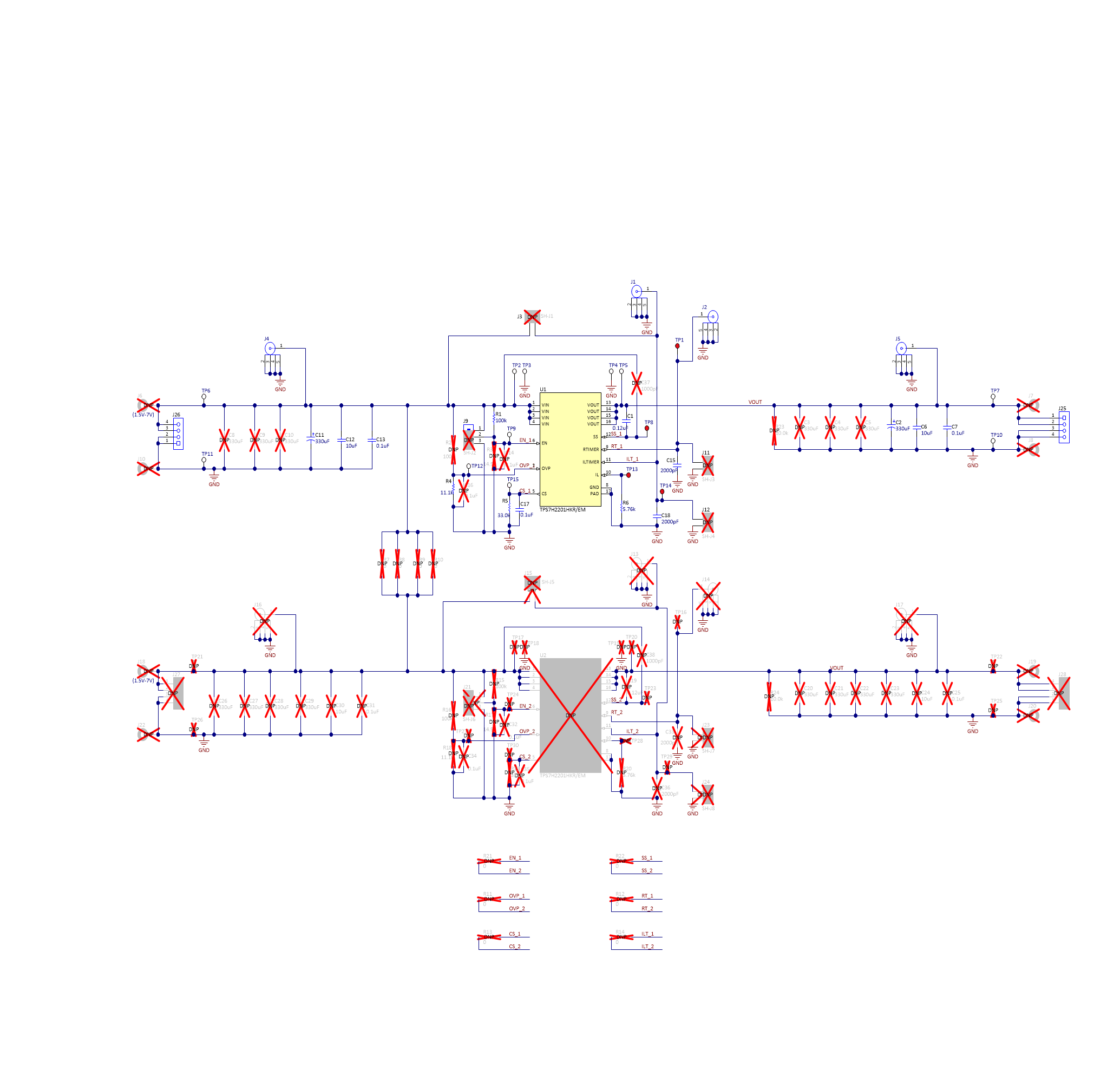SLVAE32B August 2018 – December 2023 TPS7H2201-SP
- 1
- Abstract
- Trademarks
- 1 Device Overview
- 2 Single-Event Effects
- 3 Test Device and Evaluation Board Information
- 4 Depth, Range, and LETEFF Calculation
- 5 Irradiation Facility and Setup
- 6 Test Setup and Procedures
- 7 Single-Event-Latchup (SEL), Single-Event-Burnout (SEB), and Single-Event-Gate-Rupture (SEGR)
- 8 Single Event Transient (SET)
- 9 Total Ionizing Dose From SEE Experiments
- 10Orbital Environment Estimations
- 11Confidence Interval Calculations
- 12Summary
- 13References
- 14Revision History
3 Test Device and Evaluation Board Information
The TPS7H2201-SP is packaged in a 16-pin thermally-enhanced dual ceramic flat pack package (HKH) as shown in Figure 3-1. The TPS7H2201EVM-CVAL evaluation board was used to evaluate the performance and characteristics of the TPS7H2201-SP under heavy-ions. Figure 3-2 shows the top and bottom views of the evaluation board used for the radiation testing. Figure 3-3 shows the board schematics. See the TPS7H2201-SP Single Evaluation Module for more information about the evaluation board.

The package lid was removed to reveal the die face for all heavy ions testing
Figure 3-1 Photograph of Delidded TPS7H2201-SP (Left) and Pin Out Diagram (Right) Figure 3-2 TPS7H2201-SP Board Top View (Left) and
Bottom-View (Right)
Figure 3-2 TPS7H2201-SP Board Top View (Left) and
Bottom-View (Right)
R2, R3, C14, and C16 are populated components on the TPS7H2201EVM-CVAL, however, the components were removed and all boards used for the characterization discussed in this report had the switch closed during most of the SEE characterization.
Figure 3-3 Schematics of the TPS7H2201EVM-CVAL Used for the Heavy-ion Testing